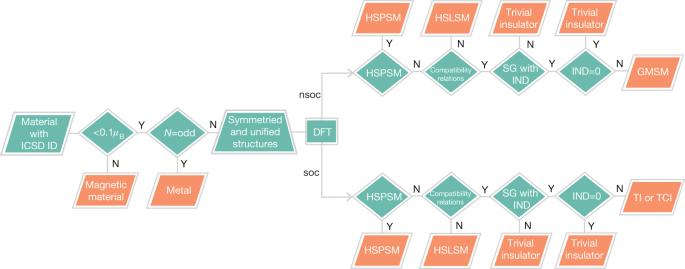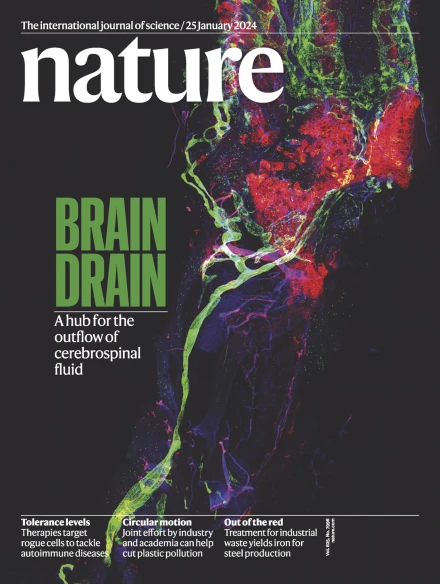Catalogue of topological electronic materials
IF 50.5
1区 综合性期刊
Q1 MULTIDISCIPLINARY SCIENCES
引用次数: 560
Abstract
Topological electronic materials such as bismuth selenide, tantalum arsenide and sodium bismuthide show unconventional linear response in the bulk, as well as anomalous gapless states at their boundaries. They are of both fundamental and applied interest, with the potential for use in high-performance electronics and quantum computing. But their detection has so far been hindered by the difficulty of calculating topological invariant properties (or topological nodes), which requires both experience with materials and expertise with advanced theoretical tools. Here we introduce an effective, efficient and fully automated algorithm that diagnoses the nontrivial band topology in a large fraction of nonmagnetic materials. Our algorithm is based on recently developed exhaustive mappings between the symmetry representations of occupied bands and topological invariants. We sweep through a total of 39,519 materials available in a crystal database, and find that as many as 8,056 of them are topologically nontrivial. All results are available and searchable in a database with an interactive user interface. Topological materials are thought to be scarce, but an algorithm that diagnoses nontrivial topology in nonmagnetic materials finds the opposite: more than 30 per cent of the 26,688 materials studied are topological.

拓扑电子材料目录
硒化铋、砷化镓钽和铋化钠等拓扑电子材料显示出非传统的块体线性响应,以及在其边界的反常无间隙状态。它们同时具有基础研究和应用研究价值,有望用于高性能电子器件和量子计算。但迄今为止,对它们的探测一直受阻于拓扑不变性质(或拓扑节点)的计算难度,这既需要材料方面的经验,也需要先进理论工具方面的专业知识。在这里,我们介绍一种有效、高效和全自动的算法,它能诊断出大部分非磁性材料中的非微带拓扑结构。我们的算法基于最近开发的占带对称性表示与拓扑不变式之间的穷举映射。我们扫描了晶体数据库中的 39519 种材料,发现其中多达 8056 种材料在拓扑上是非琐碎的。所有结果都可在一个带有交互式用户界面的数据库中查询和搜索。拓扑材料被认为是稀缺的,但一种诊断非磁性材料中非三维拓扑的算法却发现了相反的情况:在所研究的 26,688 种材料中,超过 30% 是拓扑材料。
本文章由计算机程序翻译,如有差异,请以英文原文为准。
求助全文
约1分钟内获得全文
求助全文
来源期刊

Nature
综合性期刊-综合性期刊
CiteScore
90.00
自引率
1.20%
发文量
3652
审稿时长
3 months
期刊介绍:
Nature is a prestigious international journal that publishes peer-reviewed research in various scientific and technological fields. The selection of articles is based on criteria such as originality, importance, interdisciplinary relevance, timeliness, accessibility, elegance, and surprising conclusions. In addition to showcasing significant scientific advances, Nature delivers rapid, authoritative, insightful news, and interpretation of current and upcoming trends impacting science, scientists, and the broader public. The journal serves a dual purpose: firstly, to promptly share noteworthy scientific advances and foster discussions among scientists, and secondly, to ensure the swift dissemination of scientific results globally, emphasizing their significance for knowledge, culture, and daily life.
 求助内容:
求助内容: 应助结果提醒方式:
应助结果提醒方式:


